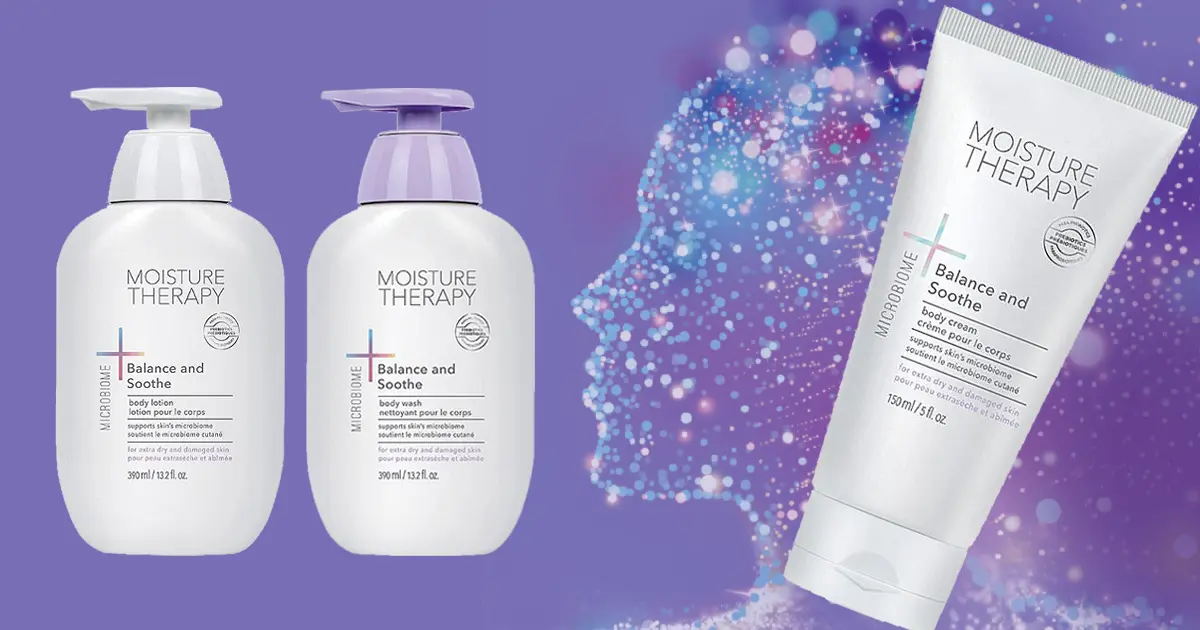Microbiomes are beneficial micro-flora that live on the skin as a protective layer, helping to balance skin and keep it looking healthy. When the microbiome balance is disturbed, skin loses its ability to hold moisture, becoming dry and damaged. Care for your microbiome with advanced formulas from our Moisture Therapy collection, and body care made with prebiotics and para-probiotics to help balance and soothe the skin.
Shop Bath & Body
Create a healthy environment for the skin’s microbiome with Moisture Therapy +Balance and Soothe Body Wash, a revitalizing body wash that gently cleanses to leave skin soft and smooth while helping restore its balance. Featuring visible capsules for a refreshing cleansing experience, it’s a great body wash for dry skin.
Body Lotion replenishes moisture while soothing and balancing to leave skin softer, smoother, and healthier-looking. Use it alongside Moisture Therapy +Balance and Soothe Body Wash for a moisturizing body care routine.
Restore balance and soothe skin with Moisture Therapy +Balance and Soothe Body Cream, a rich, moisturizing body cream that helps create a healthy environment for the skin’s microbiome. This soothing formula quickly replenishes with moisture for a smoother, softer healthier look. This sumptuous body cream can also be used alongside Moisture Therapy +Balance and Soothe Body Wash for a skin-softening experience.
Skincare: How to treat the 4 types of wrinkles Known by many names crow's feet, laugh lines creases, WRINKLES Unless you have found a way to cheat father time wrinkles are in your future. Wrinkles are a defining characteristic of the natural aging process. Superdrug surveyed 2000 women. The beauty retailer found that by age 29 women are worried about aging. There top concerns are wrinkles and sagging skin. Did you know that not all wrinkles are the same? As a matter of course most believed that there were two types of wrinkles. Dynamic Wrinkles - Those lines that develop from facial movements, such as smiling. Static Wrinkles - Lines that form due to loss of elasticity and collagen, which causes the skin to eventually sag. In 2006 researchers at the university hospital of Liege, Belgium published a study in the International Journal of Cosmetic Science. In this study they identi...

.png)

Comments
Post a Comment